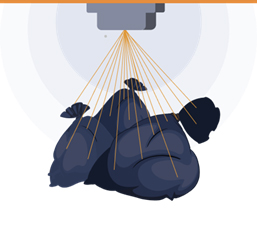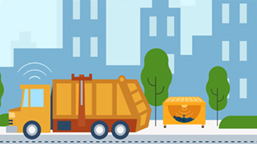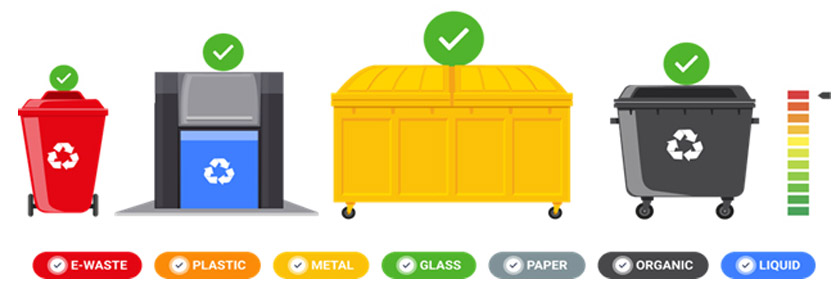


Over the past decade, the amount of waste generated has significantly increased and turned out to be the most baffling issue globally. Waste generation has noticed a progressive trend line parallel to the advancement and development of industrialization, urbanization, and rapid growth of population. While countries like Canada, United States, and many European countries rank on top in terms of the amount of waste produced, scientists and researchers are finding new techniques and methodologies to collect, segregate, recycle and manage the waste. Waste management is a crucial system for the survival and sustainability of humankind, animals, and the environment. Recent innovations and advancements in IoT technologies revolutionized waste management operations through intelligent monitoring, route optimization, and data analytics. Thus, waste management companies such as Veolia, Suez Environment, Remondis are taking advantage of such network infrastructure, electronic sensors, data visualization platforms to make data-driven resolutions. A good example of IoT-based technologies used in the market is smart garbage bins (SGBs), which combine Artificial intelligence-based recognition and data processing systems to manage waste more efficiently.
The most common IoT application in waste management is automated route optimization. Routing constitutes the pathway between the locations of origin and destination for the trucks. Thus, scheduling the defined routes for trucks transversal during the waste collection process would eventually help monitor the trucks, but this method came with a caveat. As in most places, there is no well-organized system in scheduling trucks for waste collection. It turned out to be an expensive practice to implement and raised serious consequences on business operations and public health. Later on, researchers had developed an optimal design system through advanced software, mathematical programming approaches to overcome problems associated

with automated route optimization such as shortest path, arc routing, vehicle routing, and traveling salesman. Scientists have developed a modified heuristic algorithm to optimize the route length by manual analysis of route systems. By using mixed integer-programming (MIP), they improved the efficiency of the collection systems, thereby reducing the distance covered by trucks and a new optimal scheme which concentrated on collection and transportation problem by incorporating a mixed-integer program which resulted in reducing the total waste collection path length, and also by modelling the problem as an integer linear programming they have succeeded in minimizing the cost of transportation.

Further research in geoinformatics based studies had introduced GIS (Geographic Information System) based optimizations. Spatial and nonspatial data is used to optimize collecting data on waste generation capacity, storage bins, population density, road network, and collection vehicles. Additionally, The Arc GIS Network Analyst extension application enabled new ways to carry out complex calculations to resolve vehicle routing problems, improve waste collection routes, reduce fuel costs, and decrease CO2 emissions. Simultaneously, 3D topographic data sets and Route View Pro™ software is used to enhance the route optimization.
To conclude, although tackling waste management comes with a unique set of challenges, with the advent of new technologies in IoT based technologies and data analytics, the future of sustainable waste management looks bright and promising.